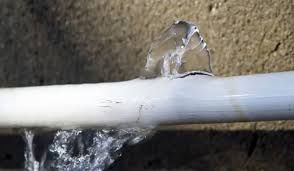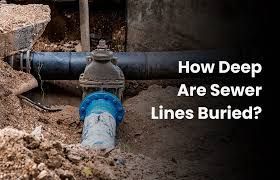Why Is My Garbage Disposal Leaking? Causes And Fixes
A leaking garbage disposal is never fun—it can create a mess under your sink and lead to water damage if not dealt with quickly. It’s important to identify the source of the leak, as the cause can range from simple clogs to more complex issues like damaged seals or mounting bolts. Let's break down where leaks can come from and what you can do about them.
"When to Repair vs. Replace Your Garbage Disposal"
Identifying the Location of the Leak
If It's Leaking From the Bottom
Leaks from the bottom of the garbage disposal usually indicate a crack in the unit or a problem with the internal components, such as the motor or seals. Over time, wear and tear can cause the disposal’s casing to weaken, leading to leaks. If you notice water pooling at the bottom, it’s essential to check the unit thoroughly for cracks or damage.
If It's Leaking From the Top
Leaking from the top of the garbage disposal often points to an issue with the mounting assembly or the sink flange. A worn-out or loose mounting bolt can cause the disposal to shift slightly, leading to leaks at the top where it connects to the sink. This area should be carefully examined for signs of damage or looseness.
If It's Leaking From the Dishwasher
If water is leaking from the dishwasher connection, it could be due to a problem with the dishwasher drain hose or the connection between the dishwasher and the disposal. A clogged or disconnected hose can cause leaks, so check the hose for any obstructions or signs of wear.
If It's Leaking From the Side
Leaks from the side of the garbage disposal are typically caused by damaged seals or gaskets where the disposal connects to the drain pipe. Over time, these seals can degrade, leading to water seeping out. In some cases, simply tightening the connection can fix the leak, but if the gasket is damaged, it may need to be replaced.
Common Reasons for Garbage Disposal Leaks
1. Worn-out Seals
The most common cause of a garbage disposal leak is worn-out seals or gaskets. These seals keep water from leaking out at the connections between the disposal and other parts of the plumbing system. As they age, they can become brittle, cracked, or loose, allowing water to escape.
2. Loose Mounting Bolts
The mounting bolts that secure your garbage disposal to the underside of the sink can come loose over time due to vibration or wear. This can cause the disposal to shift, leading to leaks at the top where it connects to the sink.
3. Cracked Disposal Unit
A cracked garbage disposal unit is a more serious issue that requires immediate attention. Over time, repeated use, pressure from clogs, or impacts can cause the unit’s casing to crack, resulting in leaks from the bottom or side of the unit.
4. Clogs
Clogs in the drain pipes can cause water to back up into the disposal, potentially leading to leaks. If the disposal is clogged, it could cause pressure to build up in the pipes, leading to leakage from various points, including the bottom or side of the unit.
5. Faulty Dishwasher Hose Connection
If your garbage disposal is connected to your dishwasher, a leak from the dishwasher hose could be the cause. A loose or cracked hose can allow water to leak out, causing a mess under the sink.
How Can I Fix the Garbage Disposal Leak?
1. Disconnect the Power and Water Supply
Before you begin any repair work, the first step is to ensure safety. Switch off the power to your garbage disposal at the breaker box, and turn off the water supply. This precaution not only protects you from electric shock but also prevents further damage during the repair process.
2. Tighten the Mounting Bolts
If your disposal is leaking from the top, it could be due to loose mounting bolts. Use a wrench to tighten the bolts that secure the disposal to the sink. Be cautious not to overtighten them, as this can damage the disposal or create other issues. Ensure the unit is firmly in place to avoid any leaks.
3. Clear Blockages in the Disposal
Clogs are a common cause of garbage disposal leaks, especially when they lead to water backing up into the unit. If you notice slow drainage or standing water, use a plunger or a plumber's snake to clear out any blockages. Removing these obstructions can alleviate pressure and help prevent leaks.
4. Inspect for Cracks in the Disposal Unit
A crack in the disposal itself is a more serious problem. Carefully inspect the disposal for any visible cracks or damage, especially on the bottom and sides. Cracks in the casing can cause water to leak out, and if you discover a significant crack, it’s often best to replace the disposal.
5. Examine the Gasket for Damage
The gasket, which seals the connection between your sink and disposal, can degrade over time. If it's cracked or worn, it may allow water to leak out. Inspect the gasket for any signs of wear or damage, and if necessary, replace it to restore a tight, leak-proof seal.
6. Secure the Sink Flange
The sink flange connects the disposal to the sink, and if it's loose or damaged, it can lead to leaks. Check the flange for any signs of wear, and tighten any loose bolts securing it. If the flange is cracked or severely worn, replacing it is the best solution to stop leaks.
7. Inspect the P-Trap for Leaks
The P-trap is the U-shaped pipe beneath your sink, which can sometimes cause leaks due to cracks or worn-out seals. Inspect it for any visible damage and replace the P-trap if necessary. A leaking P-trap can contribute to water damage and should be addressed immediately.
8. Test the Disposal After Repairs
Once you've made the necessary repairs, it's important to test the disposal. Turn on both the power and water and run the unit for a few minutes to check if the leak persists. If water is still leaking, you may need to investigate further for other potential issues.
9. Examine the Drain Line for Issues
A leak in the drain line can also contribute to water leakage from your disposal. Check the drain line carefully for cracks, loose connections, or other damage. Tighten any loose connections and replace the drain line if it’s cracked to prevent further water leakage.
It's Time to Replace Your Garbage Disposal If
While regular maintenance and repairs can extend the life of your garbage disposal, there are certain warning signs that indicate it's time for a replacement. If your unit is consistently malfunctioning, causing persistent leaks, or struggling to perform basic functions, it might be beyond repair. Additionally, if your garbage disposal is over 8-10 years old, it may no longer be efficient, even with repairs. Replacing an old, inefficient disposal can save you money in the long run and improve your kitchen’s functionality.
Warning Signs:
- Frequent breakdowns and costly repairs.
- Persistent leaks that can’t be fixed.
- The disposal struggles to grind food properly.
- Unusual noises or vibrations that don’t go away.
- An inefficient motor that causes the unit to overheat.
- A burnt-out motor that costs more to repair than replace.
- The unit is over 10 years old and showing signs of age.
- The disposal is making foul odors even after cleaning.
- A cracked or damaged disposal body that’s beyond repair.
Calling All City Plumbers
If you're unsure of the cause of the leak or need professional help, calling an experienced plumber can save you time and money. All City Plumbers are skilled in diagnosing and fixing garbage disposal leaks quickly and efficiently.
How to Prevent Garbage Disposal Leaks in the Future
Preventing garbage disposal leaks in the future is all about regular maintenance and being mindful of what goes down your sink. To start, ensure that your garbage disposal is properly installed, with all mounting bolts tightened securely. Regularly check the seals and gaskets to ensure they aren’t worn out, as these are common leak points. Be careful about what you put in the disposal; fibrous foods, grease, and non-food items can cause clogs that put unnecessary pressure on the system, leading to leaks. Also, periodically inspect the sink flange and P-trap for any signs of wear. Using cold water while running the disposal helps prevent the motor from overheating and causing potential damage. If you notice any leaks, address them immediately to prevent further damage. Lastly, scheduling an annual inspection from a professional plumber can help spot any potential issues before they escalate into leaks or other major problems.
Tips for Preventing Garbage Disposal Leaks:
- Tighten mounting bolts regularly to avoid loose connections.
- Avoid putting grease or fibrous foods down the disposal.
- Check and replace worn-out gaskets and seals.
- Run cold water while using the disposal to prevent motor strain.
- Schedule annual inspections by a professional plumber.
Conclusion
A leaking garbage disposal can be frustrating, but it’s often fixable with the right tools and knowledge. By identifying the location of the leak and following the appropriate fixes, you can get your disposal back in working order in no time. If you’re unsure or if the problem persists, don’t hesitate to call in the professionals. Regular maintenance can also go a long way in preventing leaks and extending the life of your disposal.
How do you stop a leaking garbage disposal?
Turn off the power and water, inspect the unit for cracks or loose connections, and tighten or replace parts as needed.
What causes water to come out of the bottom of a garbage disposal?
Cracks in the disposal or a worn-out gasket are common causes of leaks from the bottom.
Does a leaking garbage disposal need to be replaced?
If the unit is severely damaged or over 10 years old, it might be more cost-effective to replace it.
Will a garbage disposal leak if clogged?
Yes, Clogged disposal can cause water to backup and leak from various points. Regular cleaning can prevent this.
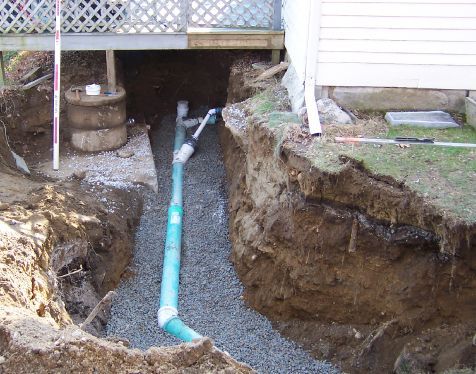
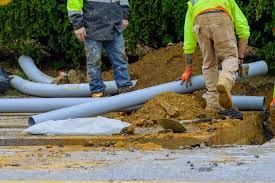
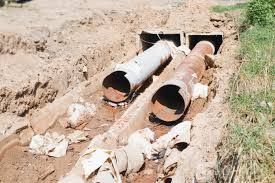
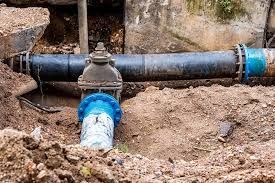

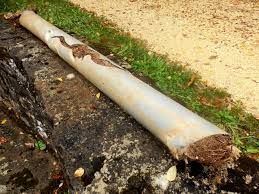
CONTACT INFORMATION
Office:
855-266-7682
Email:
service@AllCityPlumbers.com
Address: 6694 Oak Ridge Commerce Way, Austell, GA 30168
Business Hours:
Mon - Sun 24 Hours
OUR SERVICES
© 2022 All Rights Reserved|All City Plumbers Privacy Policy | Terms & Conditions | Sitemap

